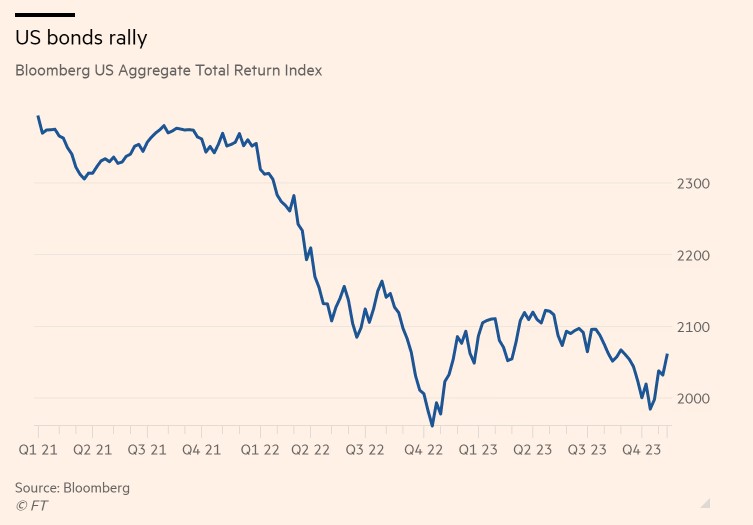We’ve all heard, “what goes up must come down.” Well, on an interesting twist, what’s come down very hard in the form of the bond market looks like it’s ready to recover a little bit.
Playing the Yield Curve
Since 2020, the 30-year Treasury bond has lost 50% of its value. For what some people would consider a safe investment, that’s a pretty brutal experience. Combined with an equities rollback through last year, a 60/40 portfolio had the greatest hit since the Great Depression. But on a twist on “what goes up must come down,” when something comes down hard enough, it might actually be ready to come back up. This is a great opportunity and it looks like it’s time to start playing the yield curve. 
What do I mean by that? We’ve had our clients in very short-term bonds for three years now. It’s time to start getting out and locking in some of those yields because there’s a good chance that the Fed rate hikes, if not already done, are pretty darn close. Why? Simply put, inflation has plummeted. The Personal Consumption Expenditure index is considered more accurate than the CPI. And this last month, for October, it dropped to 3% month over month.
So inflation looks like it’s licked, and it’s been in the threes for a number of months now. So what’s so special about that low inflation, other than the obvious at the grocery store, is when we start looking at bond yields at five or even higher, if they go out further, is their real yields. Meaning, the yields become significantly more than the rate of inflation. And historically, bond yields tend to be pretty sad after you factor inflation.
So the value of bonds in a portfolio, for the first time in many years, is becoming more significant. November gave us some other pleasant surprises. Global equities had their best month in three full years. Basically, the whole world is looking forward to these interest rates getting back under control. This is very much a global and especially Western phenomenon. It is not just the United States.
So there are some interesting and hard lessons here. First, when it comes to bonds, timing bond markets is not quite as bad as stock markets, but it’s still difficult. But what you can do is you can work the yield curve. There’s two ways. One is to find the tangent, and that’s a little bit more complicated. But the other is, when we know that the bonds are high risk of loss due to increasing interest rates, we go short. What we don’t want to do is stay short out of fear because those interest rates will be the fastest to come down.
So you can work the yield curve. But waiting for things to get better, always, always, we see the same thing. We’ve had a great bond rally, we’ve had a nice little stock rally. Those who are sitting on the sidelines have left it on the table. And there is a point where if you’re going to do that, you might as well just put your money in short-term treasuries and forget it.
So I find it fascinating in this era of rapidly climbing wages for the working class and the middle class, falling inflation, strong markets in general, how negative the public impression is as to what’s going on in the economy. In fact, I think it deserves its own video, and that’ll be the topic in the next video. We wish you the best of investing success.
Sources
- Hughes, Jennifer, et al. “US Bonds on Track for Best Month in Nearly 40 Years.” Financial Times, Financial Times, 29 Nov. 2023
- Sommer, Jeff. “Bonds Have Been Awful. It’s a Good Time to Buy.” The New York Times, The New York Times, 13 Oct. 2023
- Global Stocks Record Best Month in Three Years on Interest Rate Cut Hopes, Accessed 4 Dec. 2023.
- “Personal Consumption Expenditures Price Index.” Personal Consumption Expenditures Price Index | U.S. Bureau of Economic Analysis (BEA), Accessed 4 Dec. 2023.
Paul is the founder and CEO of Avion Wealth, LLC. He leads a team of wealth managers in building and executing financial plans for high net worth individuals and families. Contact Avion Wealth to speak with a financial advisor.




